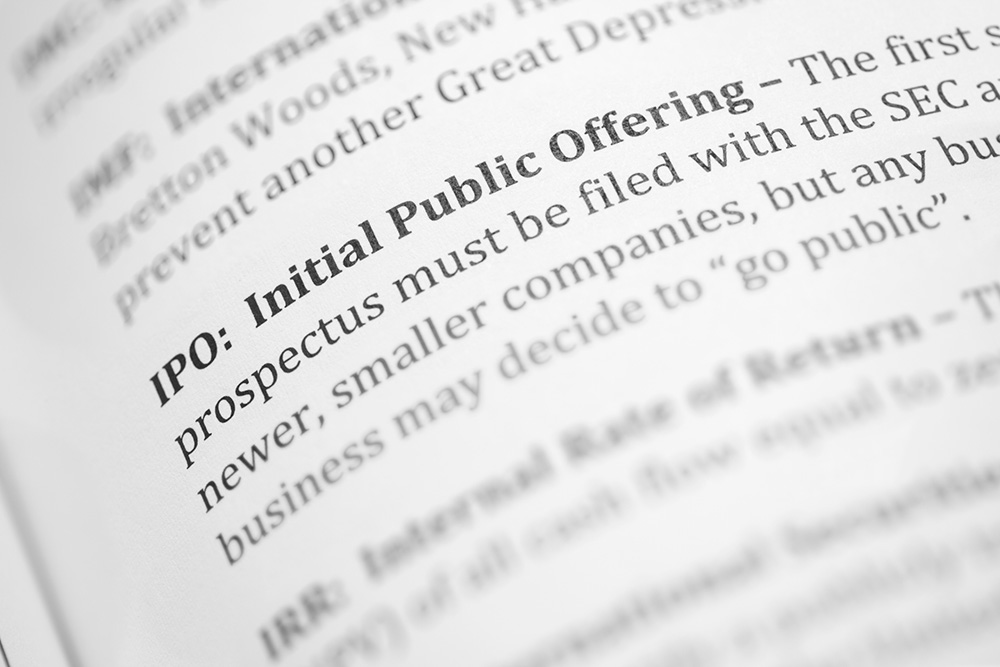Bure Valley Group is an investment introducer platform which links successful investors with exciting, innovative UK startups seeking funding. This content is for information purposes only and should not be taken as financial or investment advice.
How does the initial public offering (IPO) process work? This is where a previously unlisted company – such as a startup or other private company – takes new/existing securities to a recognised public stock exchange like the LSE, and presents them to the public (“going public”). Before that, shares were available only to a small number of investors such as angel investors, high net worth individuals (HNIs) and the business founder(s).
This process has important implications not only for the public – who may be interested in investing in the business – but also for existing shareholders. In this short guide, our investment team at Bure Valley Group outlines how IPOs typically work and how investors can identify an IPO with strong chances of success.
We hope you find this content useful. To find out more about our EIS and other investment opportunities, visit our portfolio page here. To enquire regarding our latest projects and funding (for investors and founders, respectively), you can reach us via:
+44 160 334 0827
The IPO process: an overview
The IPO process works differently in every country, of course. Yet it broadly follows a common set of steps. The first, naturally, is that the company in question needs to decide upon going public as the best course for their business. A variety of reasons may lie behind this, such as the ability to raise a lot of cash quickly, stock options (which can help attract senior manager personnel) and opportunities for greater publicity. However, an IPO may not always be the best decision for some. After all, it brings a lot of extra costs (e.g. lawyers), financial reporting and issues with existing investors who may be nervous about where an IPO may take the business.
Assuming an IPO is decided to be the right course, the business will usually start looking for an appropriate investment bank. This is to provide underwriting services and to provide advice on the IPO process. Choosing the right bank is not easy, however. Different banks have varying areas of industry specialisation, differences in research quality and unique abilities with regard to distribution (i.e. a particular bank may be better placed to issue more securities to institutional and individual investors than others).
Once a bank is chosen, the underwriting process can begin. Here, the bank essentially acts as an intermediary between the company (looking to issue) and the public (looking to invest). This will eventually help the former to sell its first set of shares. After the filings are approved, an effective date is decided for the IPO. Just before this date, both the underwriter and company decide on the price at which issuing shares will be sold (e.g. £5 per share). A range of factors can determine how high/low this price is, including the overall condition of the market, the track record of company roadshows and the overall business goal. Typically, the shares will be sold lower than their “true” value in the IPO. This gives the shares a better chance of rising on the offer day and helps drive more investor demand.
How investors can judge a successful IPO
Judging an IPO can be difficult, yet some effective principles can be used by investors to help with your due diligence process. Firstly, look at the market capitalisation of competitors in the wider industry/sector. Does the IPO look broadly similar to these – or greater – after 30 days have passed since the issue date? Secondly, look at the difference between the issuing price and the share price of the company after one month. If the range is within 20%, then this is usually a good sign.
Investors should also consider the amount of capital raised. Companies like Airbnb, DoorDash and Snowflake raised over $3 billion in 2020 during large IPOs. However, the amount needs to be judged in relation to the company’s goals. Early-stage biotech companies, for instance, tend to aim for a much lower target of $25 million.
Investors would do well to consider other factors too, both before and after the IPO:
- The market. Is the company’s target customer base growing? How large is it?
- The “moat”. Does the business offer an especially attractive product/service that gives it a sustainable competitive edge?
- Financials. Are there good margins, revenue growth and strong cash flow generation?
- The team. Do the top people in the company have people with strong experience in the public sphere? Are they surrounded by knowledgeable advisers?
- The bank. Does the investment banking partner chosen by the business appear to be a strong choice? A reputable bank with a strong track record will help boost IPO success.
Executing a successful IPO is a complex task for existing business owners and investors. Yet it can offer the latter amazing opportunities to generate a strong return in a short space of time if judged correctly.
Invitation
Interested in finding out more about the exciting startup projects we have on offer to investors here at Bure Valley Group? Get in touch today to start a conversation with our team and discuss some of the great investment memorandums we have available here:
+44 160 334 0827


